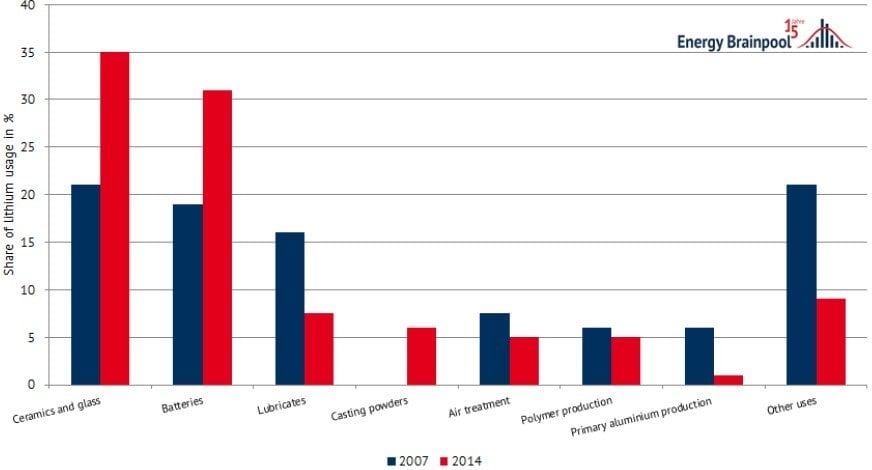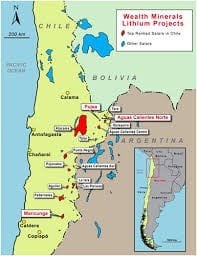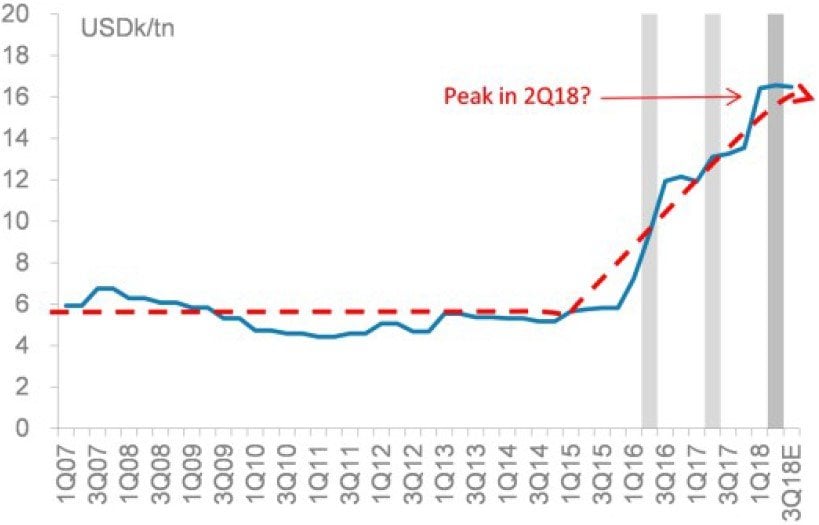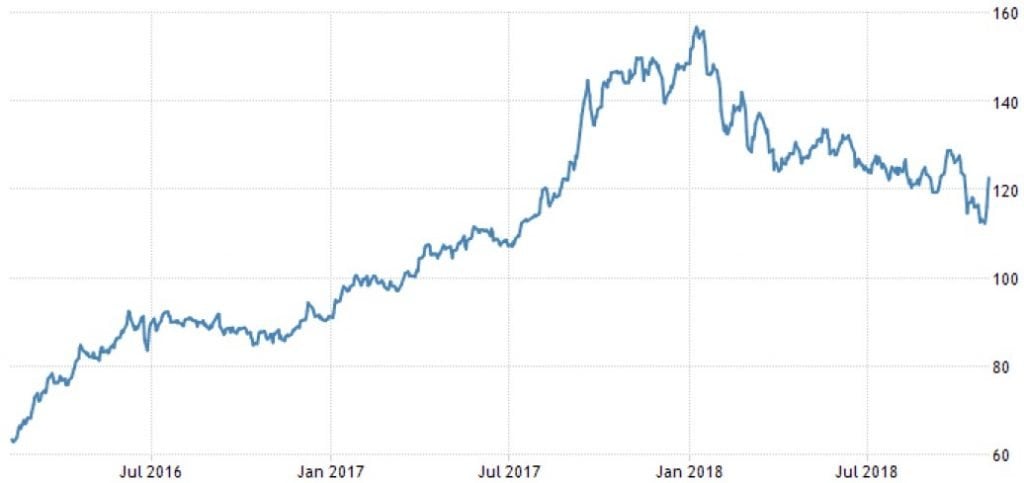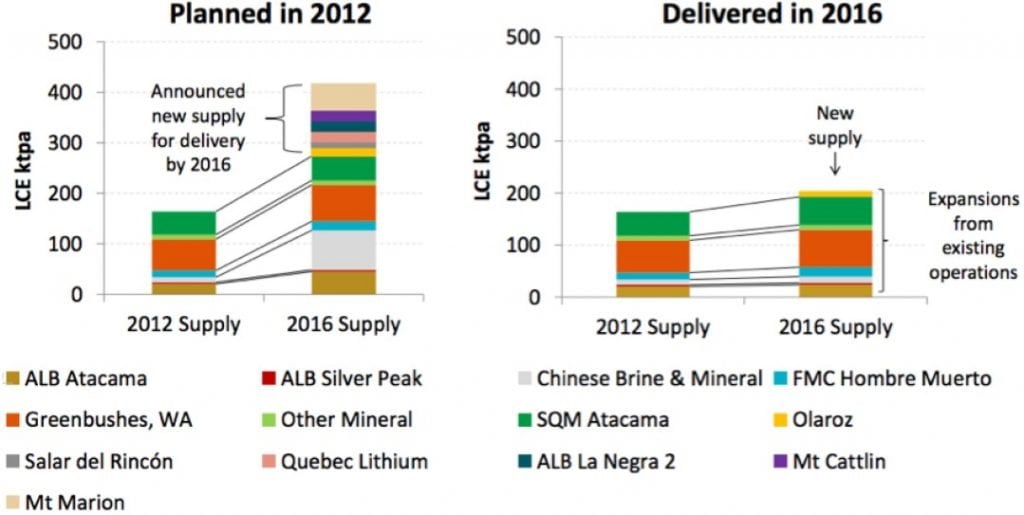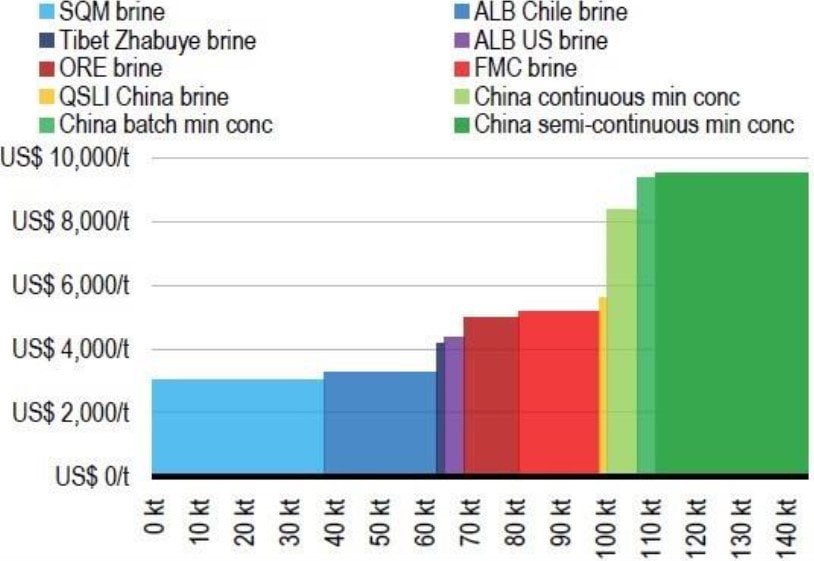The Absolute Return Partners letter for the month of November 2018, titled, “Will Lithium Sink OPEC?”
Instead of begging OPEC to drop its oil prices, let’s use American leadership and ingenuity to solve our own energy problems.
Pete Dominici
Foreword
In last month’s Absolute Return Letter – The Productivity Conundrum – I raised the curtain on fusion energy and how it is likely to affect productivity down the road. I clearly underestimated the impact my mention would have, as I received dozens of comments and questions; hence my decision to dig deeper this month.
Q3 hedge fund letters, conference, scoops etc
Laptop batteries in the bathtub
What happens if you take half a bathtub of water - seawater will do – and the amount of lithium that goes into one laptop battery? The purists will probably say “not a lot” and, at first glance, that is indeed correct.
However, imagine that the ongoing research into fusion energy is a few years further down the road, and scientists find a way to commercialise a technology that has already been proven in research laboratories all over the world. A lot will now happen.
As I said last month, the fusion process - converting hydrogen to helium - releases about 10 million times more energy than what is released when burning the same amount of hydrogen. While a 1000 MW coal-fired power plant requires 2.7 million tonnes of coal per year, a fusion plant which is geared to deliver the same output will only require 250 kilos of fuel per year.
Only a few grams of fuel are present in the plasma at any point in time. This makes the fusion reactor incredibly economical in its fuel consumption, and it adds important safety features to the process. In plain English, combining the half-filled bathtub of water and the lithium from the laptop battery will lead to about 200,000 kWh of electricity – about 30 years of UK per capita electricity consumption (Exhibit 1).
Exhibit 1: The two main ingredients in the fusion process
Source: Absolute Return Partners LLP, MacroStrategy Partnership LLP
Technically, what happens is that you make two hydrogen isotopes, deuterium and tritium, collide, and the fusion produces a heavier element, helium, and a neutron. Lithium is the fuel that operates the fusion power plants. You can read more about it here.
The main users of lithium
Lithium is a soft, white-ish metal that almost looks like silver. It is very light – it is actually the lightest of all alkali metals. It is either mined or it is extracted from underground pools of brine. The standard extraction technique is to evaporate water from brine, but the technique varies from country to country and from producer to producer.
It is used quite widely in the medical profession to treat mental diseases like bipolar disorder, depression, schizophrenia etc. It is also used to treat alcoholism, diabetes, arthritis and other disorders.
In industry, the main use is in ceramics, glass and battery production (Exhibit 2). Almost all laptops run on lithium fuelled batteries, and so do electric cars these days. In other words, regardless of what happens to fusion energy, the need for lithium will grow, as electric cars become more and more common, and the growing middle classes of emerging markets go digital.
Exhibit 2: Main users of lithium
Source: Energy BrainBlog
Who holds the upper hand?
Lithium can be found on all continents. China has significant reserves and so does Australia, but South America holds the biggest reserves and produces the most lithium – the majority of it in an area called the Lithium Triangle, which is where Argentina, Chile and Bolivia meet (Exhibit 3). The Lithium Triangle accounts for well over 50% of global lithium production.
Exhibit 3: The Lithium Triangle
Source: www.gxy.com
The Lithium Triangle is known for its high quality salt flats, including Bolivia's Salar de Uyuni, Chile's Salar de Atacama, and Argentina's Salar de Arizaro. The Lithium Triangle is believed to contain over 75% of existing known lithium reserves with Bolivia alone accounting for about half of global reserves. See Exhibit 4 below for an aerial view of a typical brine-based lithium extraction operation – this one operated by Albemarle in Nevada.
Despite having ample reserves, Bolivia has hardly started exploiting them yet, so the country could quite possibly be in for a bright future if it can get its own house sorted out. Of the three South American countries rich on lithium, Chile is currently in pole position as it offers a much friendlier climate for businesses than the other two countries do(Source: The Economist).
Investment implications
Whether fusion energy ever happens or not, the outlook for lithium producers seems bright. That view is predicated on a firm belief that the world is moving towards electrification of all transportation and heating, which seems to be a reasonable assumption.
Firstly, fossil fuels are very much responsible for our greenhouse gases and secondly, there is a strong desire in the OECD to reduce its dependency on OPEC. The fact that the fossil fuel industry is a monumental user of freshwater and that it ties up ever larger amounts of capital to produce the energy we need to spin the wheels every day doesn’t make that desire any smaller.
As far as electrification is concerned, think about the ongoing electrification of the global car fleet. Lithium is a significant component in electric car batteries so demand for lithium will, as a result, increase for many years to come.
Alternatively, think of the electrification theme and combine it with another of ‘our’ mega-trends – The Rise of the East. The growing middle classes of Asia will want to go digital unless they have fundamentally different desires than the rest of us; hence demand for laptop computers, tablets and smartphones, all of which are big users of lithium, will grow for many years to come.
Another implication of the electrification theme is that commercial banks may ultimately cease to exist. Just like Amazon has disrupted retailers all over the world in recent years, a new technology called blockchain (which was invented to support cryptocurrencies) may disrupt commercial banks in the years to come. The main caveat is that everything needs to be electrified before we can take full advantage of this new technology, but the writing is on the wall.
All of the above may unfold long before fusion energy is rolled out. When that eventually happens, the implications for fossil fuel prices are severe. Coal and natural gas prices will most likely go to zero, as there will be no need whatsoever for either coal or natural gas any longer. Demand from the chemical industry (mostly to produce plastic products) will ensure that oil prices won’t go to zero, but they will almost certainly settle at levels dramatically below current levels.
It is impossible to say precisely when all of this will happen. When I began to research the topic a couple of years ago, I got the impression that commercialisation of fusion energy is still decades away with the consensus settling around 30 years. However, the insider view now is that we may only be 15 years away from delivering fusion-generated electricity to the grid, such is the momentum.
Given the dramatic impact fusion energy is likely to have on everything, investors are presented with a once-in-a-lifetime opportunity. Having said that, economic growth between now and the day fusion energy is finally available on the grid will almost certainly drive fossil fuel prices higher in the short to medium term.
I don’t for one second believe you can simply go short fossil fuels today and then sit back and wait for fossil fuel prices to implode, and I will warn you strongly against shorting fossil fuels more systematically anytime soon.
Finally, in terms of the bigger picture, bear in mind that this is only the tip of the iceberg. Countries that are dependent on the fossil fuel industry for its continued economic growth – and no OECD country is more dependent on the fossil fuel industry than the US – will most likely run into strong head winds for a period of time.
Talking about OPEC, political priorities in the OECD will most likely change as OPEC’s powers begin to fade. And, as that happens, other countries – those rich on lithium – will move to the forefront. I have even (half) joked that OPEC at some point in the future may be replaced by OLEC - the Organisation of Lithium Exporting Countries.
With the biggest lithium reserves in the Lithium Triangle, and with Chile being a price-setter, could Chile become the new Saudi Arabia? Not as far-fetched as you may think. At the very least, the South American continent’s prominence and political influence will most likely grow as fusion energy becomes more than a distant vision.
The bear story on lithium
It’s quite easy to get carried away with the lithium story, so I started to look around for the bear story and, lo and behold, it wasn’t that difficult to find. Morgan Stanley is a firm bear, and its views are largely based on the research it has conducted on SQM (Sociedad Química y Minera de Chile) - the largest producer of lithium worldwide. Allow me to quote from a Morgan Stanley research paper from August 2018:
“SQM used to be the price setter. Recall that SQM’s 1997 entry into the lithium market caused a ~50% reduction in lithium prices and led to mine closures in Argentina, Australia, China, Russia and the United States. We believe that SQM lost its role as price setter only in 2015, when – due to its dispute with the former Chilean government – it could not increase its production quota. With that dispute resolved, and already announcing to new capacity expansions, we expect SQM to recapture the lithium price setting role from 2019 forward.”
Morgan Stanley go on to conclude:
“We believe that SQM is recovering the capacity to define global price and the right commercial decision is to reduce prices to the marginal cost of production […]. We expect an inflection point in 3Q18 and a gradual price decline during 2019-20, bottoming below $8k in 2021.”
As you can see from Exhibit 5, after moving broadly sideways for a number of years, lithium prices have done extraordinarily well over the past 2-3 years. What you cannot see from that chart is that lithium prices have been under considerable pressure in recent months, but that is obvious if you look at Exhibit 6.
Before we all sign up to Morgan Stanley’s rather bearish views, it ought to be said that the lithium industry has a history of overpromising and underdelivering as far as new projects are concerned. Take 2012, which was a year marked by very ambitious expansion plans in the industry. All guns were blazing when the new plans were announced, but what happened? I am sure you will draw conclusions similar to mine once you have looked at Exhibit 7.
Exhibit 5: SQM lithium prices (USD k/ton)
Source: Morgan Stanley Research, July-August 2018
Exhibit 6: Lithium price index
Source: Trading Economics
Exhibit 7: Plans vs. deliveries 2012/16
Source: Mining.com
Another risk for the long-term is that lithium may eventually be replaced by another and even more efficient fuel. I put this concern to Andy Lees at MacroStrategy Partnership (our primary research provider), and his answer was quite telling:
“Fusion energy today is where the aviation industry was in 1904 when the Wright Brothers developed the first fixed-wing aircraft. Back then, nobody had heard of jet engines, and I am sure the same will happen in the fusion industry. Eventually, something will prove more efficient than lithium but, for now, lithium is the story to focus on”.
Adding it all up
Whether Morgan Stanley is right or wrong, the combination of electric cars, digitalisation in emerging markets and fusion energy can only drive lithium prices higher longer term. In that context, I note that electric car batteries have now reached cost parity with combustion engines, meaning that demand for electric cars will most definitely rise further in the years to come.
As far as the extraction process is concerned and, admittedly, I haven’t spent any time on that in this letter, it makes a massive difference cost-wise, whether you mine lithium or extract it from brine water. Even if Morgan Stanley’s forecast turns out to be correct, and lithium prices drop back to the $7-8,000 range again, the typical brine-based lithium producer will still make a handsome profit, assuming his all-in costs are only $3-4,000, as they typically are. The producers who will bleed at $8,000 will be the mining companies – not the brine water extraction companies (Exhibit 8).
Exhibit 8: Lithium carbonate cost curve - brine vs. mining
Source: UBS
Niels C. Jensen
5 November 2018

